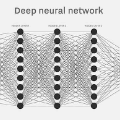Traditionally, numerical models have been deployed in oceanography studies to simulate ocean dynamics by representing physical equations. However, many factors pertaining to ocean dynamics seem to be ill-defined. We argue that transferring physical knowledge from observed data could further improve the accuracy of numerical models when predicting Sea Surface Temperature (SST). Recently, the advances in earth observation technologies have yielded a monumental growth of data. Consequently, it is imperative to explore ways in which to improve and supplement numerical models utilizing the ever-increasing amounts of historical observational data. To this end, we introduce a method for SST prediction that transfers physical knowledge from historical observations to numerical models. Specifically, we use a combination of an encoder and a generative adversarial network (GAN) to capture physical knowledge from the observed data. The numerical model data is then fed into the pre-trained model to generate physics-enhanced data, which can then be used for SST prediction. Experimental results demonstrate that the proposed method considerably enhances SST prediction performance when compared to several state-of-the-art baselines.
翻译:传统上,数值模拟模型已经被部署在海洋学研究中,以通过代表物理方程来模拟海洋动力学。然而,许多涉及海洋动力学的因素似乎定义不清楚。我们认为,在预测海表温度(SST)时,从观测数据转移物理知识可以进一步提高数值模型的准确性。最近,地球观测技术的进步已经产生了数据的巨大增长。因此,有必要探索利用不断增长的历史观测数据来改进和补充数值模型的方法。为此,我们引入了一种从历史观测数据转移物理知识到数值模型中的SST预测方法。具体而言,我们使用编码器和生成对抗网络(GAN)的组合来捕获观测数据的物理知识。然后将数值模型数据馈入已预先训练的模型中以生成经物理增强的数据,然后可用于SST预测。实验结果表明,与几个最先进的基线相比,所提出的方法在SST预测性能上有显著的提高。

